Sell Your Coins
We Buy All Gold and Silver Coins
Types of Coins We Buy
- At Sell Your Gold and Silver, selling coins online has never been easier. Using our free, fully insured FedEx shipping service, you can safely send in your coins and receive top offers without leaving home.
- Bullion Coins – Gold, silver, and platinum bullion coins from around the world.
- Collectible Coins – Rare and historic coins valued for their scarcity and condition.
- Commemorative Coins – Limited-edition coins issued to honor special events or figures.
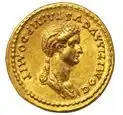
Domestic Coins
- Gold American Eagles
- Gold American Buffalo
- Pre-1933 US Gold Coins
- Platinum American Eagles
- Silver Dimes & Quarters
- Silver Half Dollars
- Liberty Gold Coins
- Gold Commemorative Coins
- American Silver Eagles
- Silver Eisenhower Dollars
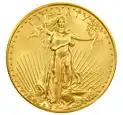
Foreign Coins
- Gold Maple Leaves
- Silver Maple Leaves
- Gold S.A. Krugerrands
- Platinum Maple Leaves
- Gold Austrian Philharmonics
- Gold Chinese Pandas
- Silver Chinese Pandas
- Gold Australian Kangaroos
- Silver Australian Koalas
- Gold British Britannia
Fill out the form below to request your FREE Gold & Silver Appraisal.
and consent to receive transactional text messages.
1. Uncirculated Coins:
Uncirculated coins are coins that have yet to enter the commerce stream. All coins start out this way after they are minted, but some coins will remain uncirculated. To be an authentic uncirculated coin it must be certified.
It can only be certified if has its original sheen/luster – which it won’t if it has been in circulation. There also must be no signs of wear on the coin. If an uncirculated coin does show any signs of wear it may have physically contacted other coins at mint or when the coins were transported from the mint.
Don’t fear: experts will be able to tell the difference between these marks and marks from circulation. Sell your gold and silver coins today! Call to get a quote.
Diamonds conduct heat differently than imitation stones like cubic zirconia or glass. Using precision
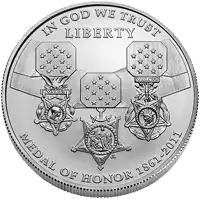
2. Proof Coins:
Proof coins are also uncirculated coins. They are rare and can often be expensive. These coins are made only for the collector’s market or purchased for display purposes. In mint, proof coins are struck twice to bring out the full details of the coin design. The back of a proof coin is usually mirror-like.
They are considered the finest quality of coin produced by the U.S. Mint.: hand-polished and packaged to preserve its brilliant finish. Sell your gold and silver coins today!
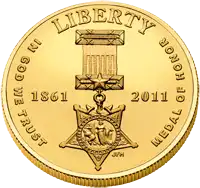
3. Numismatic Coins:
While a numismatic coin can be considered a bullion coin, investors who purchase numismatic coins often pay a pretty penny, as their value can be many times the value of the actual precious metal content.
Numismatic coins are essentially rare or valuable coins that have external value. They can be more valuable because of their historical significance, they can be one of a kind, have special marks or be minted in an abnormal way, and therefore collectible items. Sell your gold and silver coins today!
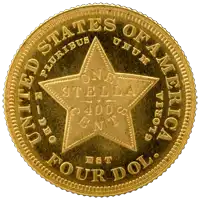
4. Commemorative Coins:
Another coin not intended for general circulation. These coins are U.S. Mint products created to commemorate important aspects in American history, and help raise money to preserve history, such a build new museums, maintain national monuments, preserve historical sites and support various Olympic programs. These coins are sought after since there is a limited quantity and they are only available for a limited amount of time. Sell your gold and silver coins today!
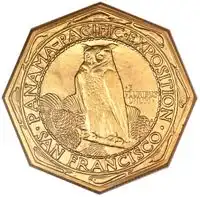
How to Tell If Your Coin Is Authentic
At Sell Your Gold and Silver, every diamond we receive goes through a thorough and professional evaluation process. Our certified gemologists, including GIA-trained experts, use advanced technology along with hands-on inspection methods to ensure your diamonds are tested with accuracy and care.
Here are a few key ways experts verify authenticity:
01. Weight & Dimensions – Genuine coins are struck to exact specifications. Even small differences in weight or size may indicate a counterfeit.
02. Magnet Test – Precious metals like gold and silver are not magnetic. If a coin sticks to a magnet, it’s likely a fake.
03. Sound Test – Real gold and silver coins produce a distinct ringing sound when gently tapped, unlike the dull tone of counterfeit metals.
04. Design & Detail – Authentic coins have sharp, clear engravings. Replicas often show blurred edges or shallow details.
05. Professional Appraisal – The safest way to confirm your coin’s authenticity is to have it examined by experienced appraisers with the right tools.
At Sell Your Gold and Silver, our experts use advanced technology and years of experience to test every coin we receive. With us, you can sell with confidence, security, and peace of mind.
How to Tell If Your Coin Is Authentic
When it comes to coin collecting, not every piece is what it appears to be. Some coins are harmless replicas, while others are deliberate fakes or even altered versions of genuine coins. Knowing the difference can protect your investment.
Replicas: Replica coins are created to imitate famous or historic designs, often sold as souvenirs or novelty items. They typically lack the sharp detail of authentic coins, and a visible seam around the edge is a giveaway sign of casting. While replicas can be fun keepsakes, they hold little to no market value, so always inspect carefully before buying.
Counterfeits: Counterfeit coins are intentionally produced to deceive collectors and the public. These fakes are usually struck from base metals rather than precious metals. Common warning signs include bubbles, uneven surfaces, and engravings that don’t match genuine mint details. Forged gold coins often target older U.S. pieces minted between the 1800s and early 1900s, while silver counterfeits frequently appear in popular commemorative designs. Careful comparison with authentic examples is one of the best ways to spot a fake.
Altered Coins: Some genuine coins are modified to appear more valuable. Alterations may involve changing dates, mintmarks, or applying finishes like polishing or acid treatments. While the coin itself may be real, the tampering lowers both its authenticity and value. A magnified inspection—ideally by an expert—is the best way to confirm a coin has not been altered.
Why Authentication Matters: High-value or rare coins should always be accompanied by professional authentication. This ensures the piece is genuine and maintains its value.
At Sell Your Gold and Silver, our experts thoroughly test and evaluate every coin we receive. Whether you suspect your coin might be a replica, counterfeit, or altered, we’ll examine it with precision and provide you with a fair, transparent offer.
Grading and Authenticating Coins
When dealing with rare or high-value coins, grading and authentication play a crucial role in protecting both buyers and sellers. Third-party grading companies act as impartial authorities, evaluating a coin’s authenticity, quality, and condition. Their certifications provide peace of mind, ensure transparency, and help maximize value in the market.
At Sell Your Gold and Silver, we accept all professionally graded coins. If you have certified coins you’re ready to sell, call us today at 813-530-8544 to discuss their value.
ANACS – The First Grading Service
The history of coin grading dates back to the 1970s with the American Numismatic Association Certification Service (ANACS). As the first official grading body, ANACS was created to uphold trust within the coin collecting industry. Coins were authenticated, graded on both sides, and returned with a certificate and photograph for reference.
PCGS & NGC – Today’s Leaders
By the mid-1980s, new grading systems raised the bar for coin certification. The Professional Coin Grading Service (PCGS) began encapsulating coins in tamper-proof holders, ensuring the coin and its certificate were permanently linked. Soon after, the Numismatic Guaranty Corporation (NGC) entered the market with a similar service. Today, PCGS and NGC remain the most trusted grading authorities in the U.S.
The Human Element in Grading
While professional graders follow strict guidelines, coin grading is not an exact science. Much like diamonds, coins are judged by human experts, which means there can be subjectivity in determining grade levels. Two coins of the same grade may vary in luster, strike, or color, making one more desirable than another. Collectors often “cherry-pick” the finest examples within a grade to build their collections.
Gradeflation – Changing Standards
Over time, grading standards have evolved and, in many cases, become stricter. This phenomenon, sometimes referred to as “gradeflation,” means a coin graded decades ago may receive a different score if submitted today. For collectors and sellers, this evolution highlights the importance of having up-to-date certification when selling valuable coins.
Ready to Sell Your Coins?
Do you own rare or certified coins? At Sell Your Gold and Silver, our team works with all grading companies, ensuring you receive a fair and competitive offer for your collection.
Grading for Circulated Coins
| Condition | Grade Range | Characteristics |
|---|---|---|
| Poor | PO-1 | The coin is barely recognizable. The date may be missing and the design has little to no raised detail. |
| Fair | FR-2 | Outline and date may be faintly visible, but lettering and rims are heavily worn or gone. |
| Almost Good | AG-3 | Some letters and design visible, though rims and finer details are mostly worn away. |
| Good | G-4 & G-6 | General design can be identified, but details are weak. Rim appears stronger. |
| Very Good | VG-8 & VG-10 | Moderate to heavy wear but details like parts of "LIBERTY" remain visible. |
| Fine | F-12 & F-15 | Moderate wear with clear detail. Example: all 7 letters of "LIBERTY" visible. |
| Very Fine | VF-20, 25, 30, 35 | Light to moderate wear, most design elements visible and stronger. |
| Extremely Fine | XF-40 & XF-45 | Light wear only on high points. Mint luster may still be seen. |
| About / Almost Uncirculated | AU-50, 53, 55, 58 | Very slight wear on highest points. AU-58 coins may look almost Mint State. |
